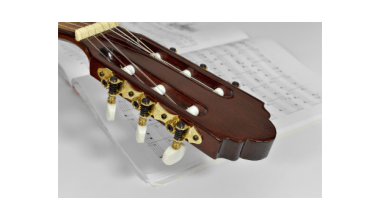Choosing the right microphone is crucial for singers. Whether you’re recording in a studio or performing live, the right mic enhances your vocals, ensuring clarity and richness. With so many options available, it can be challenging to determine which mic is best for singing. This guide will help you navigate the choices, whether you’re a beginner, a professional, or somewhere in between.
Why Choosing the Right Mic for Singing Matters
A microphone is more than just equipment—it’s an extension of your voice. Here’s why it’s essential to choose wisely:
- Captures Nuance: The right mic captures the details and emotions in your voice.
- Reduces Noise: Good mics minimize background noise, enhancing clarity.
- Boosts Confidence: Singers perform better when they trust their equipment.
Understanding which mic is best for singing helps you achieve professional-quality sound.
Types of Microphones for Singing
Different microphones serve different purposes. Here’s an overview:
1. Condenser Microphones
- Features: High sensitivity, wide frequency range, detailed sound capture.
- Best For: Studio recording, acoustic and soft vocals.
- Examples: Neumann TLM 103, Audio-Technica AT2020.
2. Dynamic Microphones
- Features: Durable, resistant to feedback, handles high sound pressure.
- Best For: Live performances, loud environments.
- Examples: Shure SM58, Sennheiser e935.
3. Ribbon Microphones
- Features: Warm, vintage sound, delicate construction.
- Best For: Classic vocal tones, retro-style recordings.
- Examples: Royer R-121, AEA R84.
4. USB Microphones
- Features: Easy plug-and-play setup, affordability.
- Best For: Beginners, podcasters, and casual recordings.
- Examples: Blue Yeti, Rode NT-USB.
Each type of microphone has unique strengths, catering to different needs and scenarios.
Top Picks: Which Mic Is Best for Singing?
Let’s dive into some of the best microphones for singing:
1. Shure SM58
- Why It’s Great: Known for durability, clear sound, and feedback rejection.
- Price Range: $99-$120.
- Best For: Live performances and beginners.
2. Neumann TLM 103
- Why It’s Great: Studio-grade clarity, low self-noise, premium build.
- Price Range: $1,000-$1,200.
- Best For: Professional studio recordings.
3. Audio-Technica AT2020
- Why It’s Great: Affordable, excellent sound quality, versatile.
- Price Range: $100-$150.
- Best For: Budget-conscious home studio setups.
4. Rode NT1-A
- Why It’s Great: Low noise, warm tone, durable.
- Price Range: $250-$300.
- Best For: Recording vocals at home.
5. Sennheiser e935
- Why It’s Great: Rich sound, superior feedback rejection.
- Price Range: $200-$250.
- Best For: Rock and pop vocalists performing live.
6. Blue Yeti
- Why It’s Great: USB functionality, multiple polar patterns, beginner-friendly.
- Price Range: $120-$150.
- Best For: Casual singing and podcasting.
These microphones cater to various needs, from home recording to professional performances.
Factors to Consider When Choosing a Mic for Singing
Finding which mic is best for singing involves considering several factors:
1. Vocal Style
- Soft and melodic: Opt for condenser microphones.
- Powerful and dynamic: Choose dynamic microphones.
2. Purpose
- Studio recording: Look for high-sensitivity condenser mics.
- Live performances: Choose durable, feedback-resistant dynamic mics.
3. Budget
- Entry-level: Audio-Technica AT2020, Blue Yeti.
- High-end: Neumann TLM 103, Shure KSM9.
4. Room Acoustics
- Treated rooms: Condenser mics excel in controlled environments.
- Noisy spaces: Dynamic mics are less sensitive to background noise.
By evaluating these factors, you can select a microphone that complements your voice and setup.
Setting Up Your Microphone for Singing
Even the best microphone won’t perform well without proper setup. Follow these steps:
1. Positioning
- Place the mic at mouth level, about 6-12 inches away.
- Use a pop filter to reduce plosives.
2. Acoustic Treatment
- Minimize echo with foam panels, bass traps, and diffusers.
- Consider using a reflection filter for untreated spaces.
3. Adjusting Settings
- Set the gain on your audio interface to avoid clipping.
- Experiment with EQ to enhance your vocal tone.
Proper setup ensures the microphone captures your voice at its best.
Tips for Recording and Singing with a Mic
To make the most of your microphone, keep these tips in mind:
- Warm Up: Prepare your voice before recording or performing.
- Maintain Consistent Distance: Avoid moving too close or too far from the mic.
- Minimize Handling Noise: Use a stand or handle the mic gently.
- Experiment with Angles: Slight changes in mic angle can affect sound quality.
These tips ensure your recordings and performances are clear and professional.
Common Challenges and Solutions
1. Background Noise
- Solution: Use a noise gate and choose a dynamic microphone in noisy environments.
2. Plosive Sounds
- Solution: Use a pop filter and adjust the mic’s angle.
3. Feedback During Live Performances
- Solution: Position speakers away from the microphone and use cardioid mics.
Addressing these challenges ensures smoother recordings and performances.
The Future of Singing Microphones
Microphone technology is evolving rapidly. Here’s what to expect:
- AI Integration: Microphones with real-time noise cancellation and auto-adjustment.
- Compact Designs: Smaller, portable microphones for travel-friendly setups.
- Immersive Audio: 3D and spatial audio microphones for enhanced recordings.
Staying updated with these advancements helps you stay ahead in your singing journey.
Conclusion
Choosing the right microphone is a critical step for singers. Whether you’re performing live, recording in a studio, or singing at home, selecting the best mic ensures your voice shines. From the versatile Shure SM58 to the premium Neumann TLM 103, there’s a microphone for every style, budget, and setting.
Related Articles:
For further reading, explore these related articles:
- Best Microphone for Live Vocals: Enhance Your Performance
- Studio Singing Microphone: Find the Best Mic for Vocal Recording
For additional resources on music marketing and distribution, visit Deliver My Tune.






